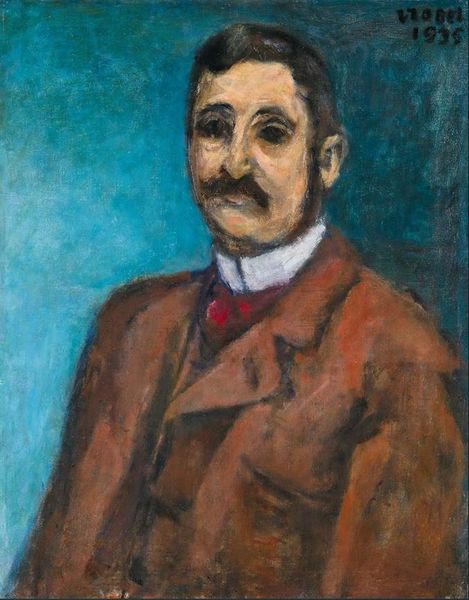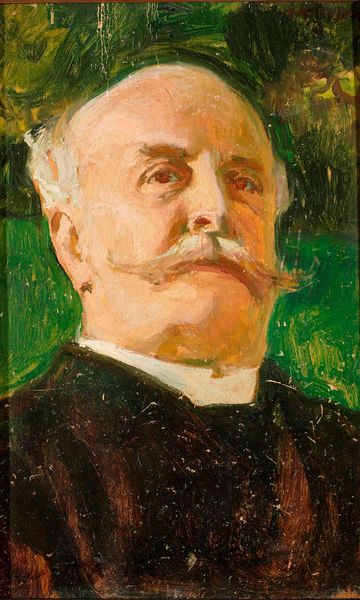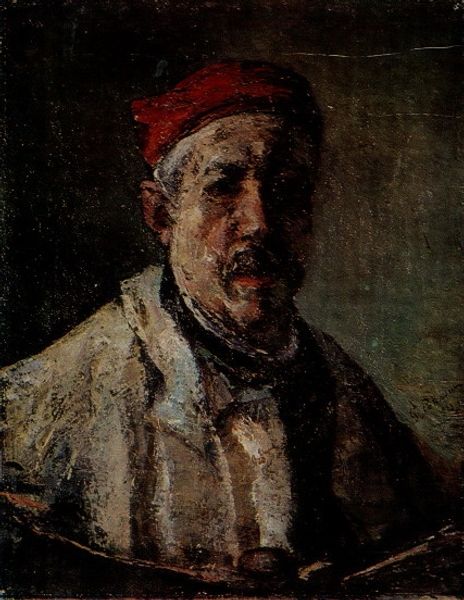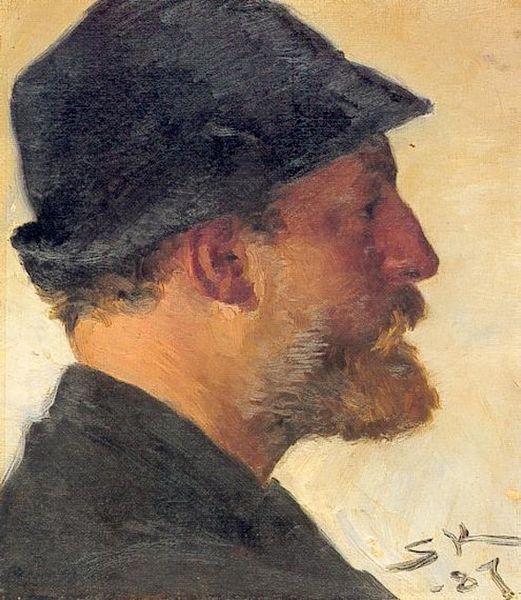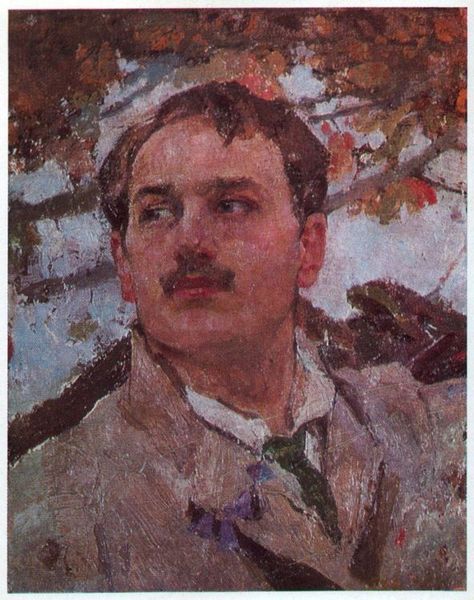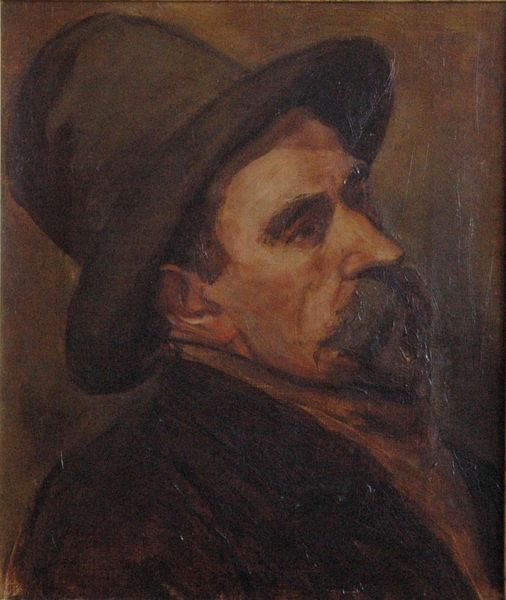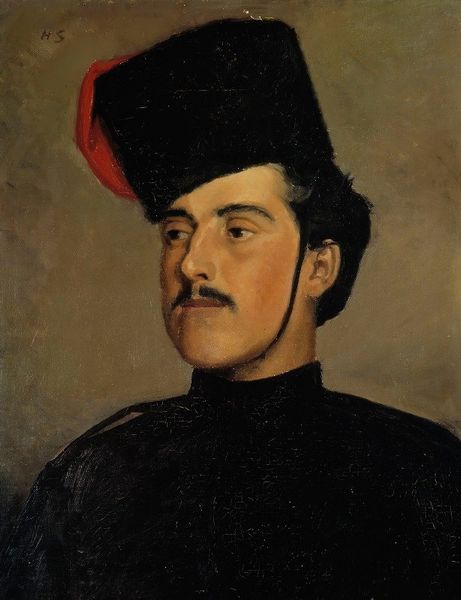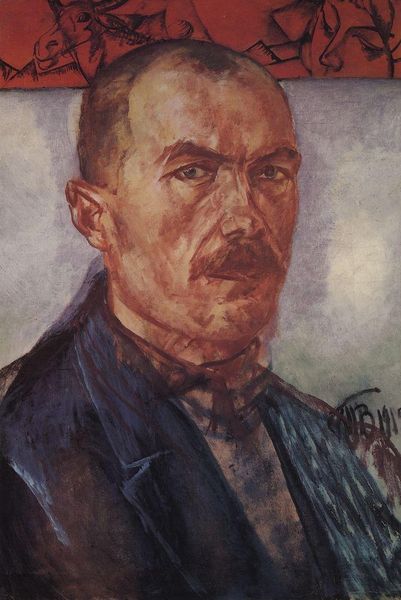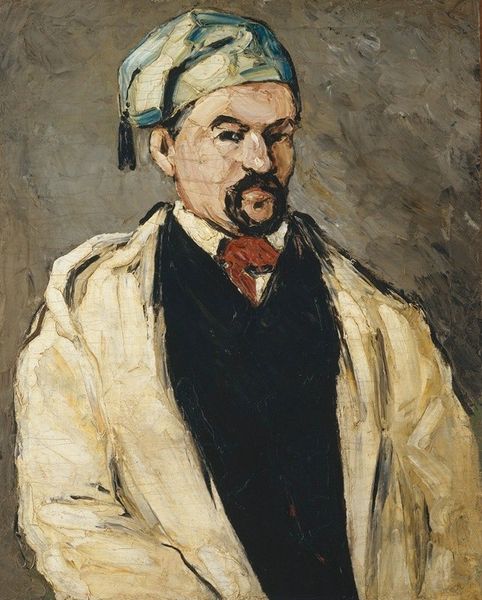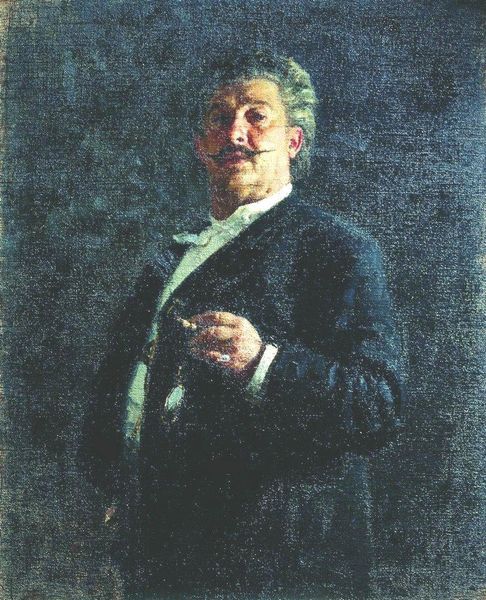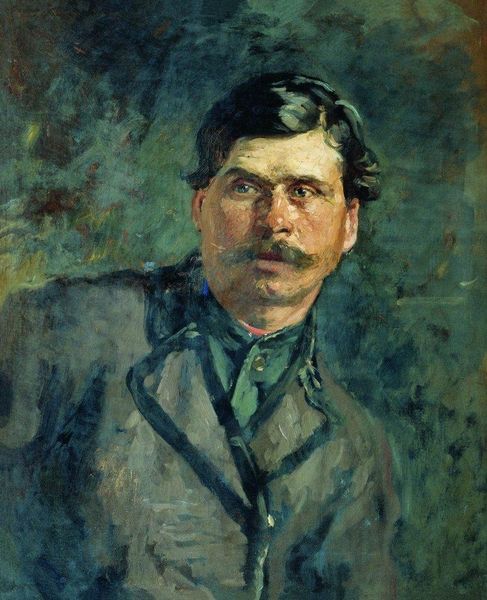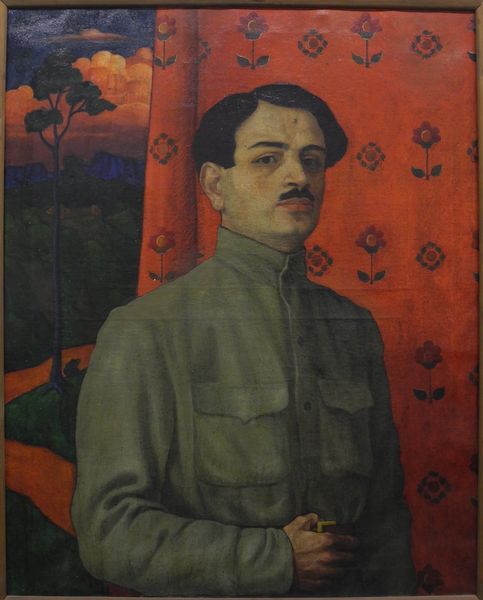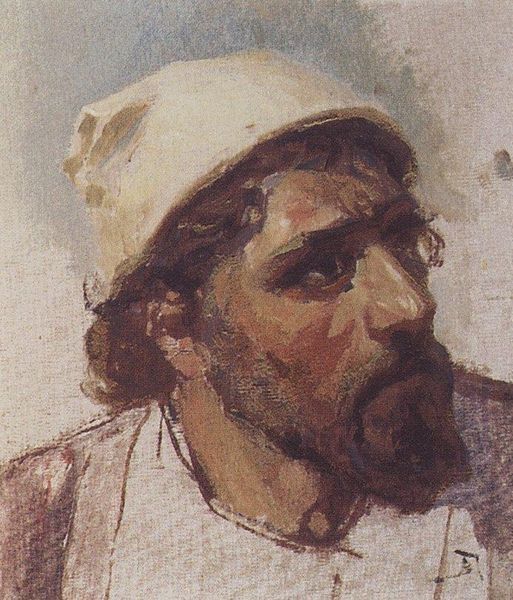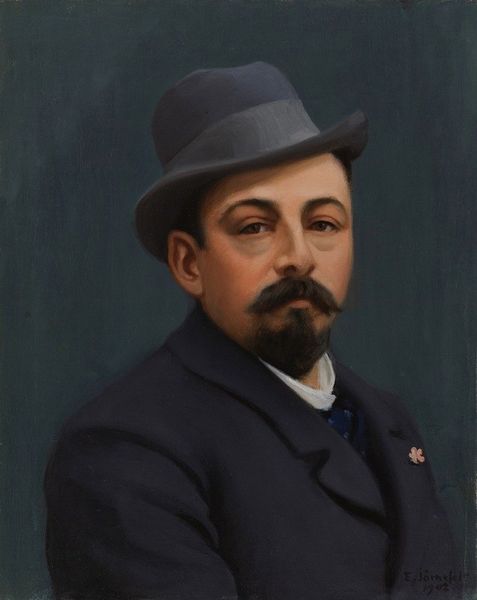
painting, oil-paint
#
portrait
#
painting
#
oil-paint
#
oil painting
#
post-impressionism
Copyright: Public domain
Curator: Looking at Vincent van Gogh's "Portrait of a Man with a Skull Cap" from 1887, currently housed at the Van Gogh Museum in Amsterdam, I'm struck by its reserved yet palpable emotionality. What do you make of it? Editor: It’s quietly intense. The blues and greens create a solemn mood. Is he weary, melancholy, or simply pensive? Curator: The skull cap itself is interesting. Caps were standard for working men. Perhaps it serves as a symbol for his common origins and daily routine, which, in a portrait, becomes an exploration of what defines and imprisons us? Editor: Interesting take! Contextually, the late 1880s in Paris saw an influx of such portraiture as the rising bourgeois sought to legitimize themselves. Given the backdrop, it appears this portrait, with the common attire, might democratize access, rather than create symbolic entrapment. Curator: It makes you wonder what his story might be, doesn't it? I can't help but delve into the color palette—greens associated with introspection, blues connected to wisdom and tranquility. I see Van Gogh using colors to explore deeper truths and complexities beyond external appearances. Editor: The impasto style, especially on his face, amplifies that sense of searching. There’s this social critique, this Post-Impressionist rendering that, while embracing industrial advances, questions the societal structures those very advancements were built upon. His identity might not be so apparent to him in this state, but very apparently being challenged around him. Curator: Absolutely! It feels as if Van Gogh tried to go beneath the sitter's clothes to access his spiritual substance by using his style, while remaining on the surface when capturing his true face. Editor: An honest tension we encounter, here. Almost a call for equality and honest labor representation, despite their existence within inequitable conditions, in art's most subtle expressions. Curator: Yes. The portrait resonates powerfully as a reflection on internal and societal experiences through art, revealing how we project the symbols that create social continuity but can also hold us captive. Editor: Absolutely, an introspective commentary that leaves you pondering the sitter's social conditions and artistic representation through history.
Comments
No comments
Be the first to comment and join the conversation on the ultimate creative platform.
